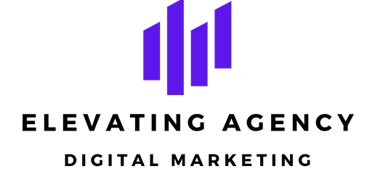Web Design Essentials: How a Great Website Drives Business Growth
The role of user-friendly and visually appealing websites in achieving business goals.


The Importance of First Impressions in Web Design
In today's digital marketplace, the importance of first impressions cannot be overstated, particularly when it comes to web design. Users frequently form opinions about a business within mere seconds of landing on its website. This rapid evaluation highlights the necessity for an appealing design that captures the user's attention immediately. Elements such as aesthetics, branding consistency, and clarity of information play pivotal roles in establishing a favorable initial experience.
A website's visual appeal is often the first feature that engages a user. Colors, fonts, images, and layout must come together to create a harmonious design that reflects the brand's identity. Consistent branding across a website not only strengthens recognition but also instills trust. Users are more likely to engage with a company whose website appears professional and well-designed, as these factors convey reliability and competence.
Furthermore, clarity of information is essential in guiding users through the site smoothly. An organized layout with easily navigable sections ensures that visitors find what they need quickly, thereby reducing frustration and enhancing user satisfaction. If a website is cluttered or difficult to understand, potential customers may abandon their visit and seek alternatives, which can directly impact conversion rates.
Positive first impressions foster user engagement and trust, setting the stage for deeper interactions with the brand. When visitors feel confident in a website's design, they are more likely to explore further, ultimately leading to increased conversions and brand loyalty. In essence, ensuring an inviting and coherent web design can create significant advantages in building relationships with customers. Therefore, investing time and resources into perfecting these first impressions is crucial for any business aiming for growth in the competitive online landscape.
User Experience (UX) and Its Impact on Business Success
User experience (UX) plays a pivotal role in the overall effectiveness of a website, significantly influencing a business's growth and success. In the digital landscape, where users have a plethora of options, the design of a website must prioritize the needs and preferences of its audience. Key elements of excellent UX include intuitive navigation, accessibility, and responsiveness across various devices.
Intuitive navigation allows users to find information effortlessly, making their interaction with the site more pleasant. When users encounter complicated or labyrinthine menus, they are more likely to abandon the website, leading to higher bounce rates. A streamlined navigation system enhances usability, encouraging users to explore more content, which can increase session times. Additionally, accessible web design ensures that individuals with disabilities can engage with the site's offerings. This inclusivity not only expands the user base but also demonstrates a commitment to social responsibility, positively impacting brand perception.
Furthermore, responsiveness across devices is crucial. Given the diverse range of devices used to access the internet today, a website must perform optimally on desktops, tablets, and smartphones. Failure to implement responsive design can lead to a frustrating user experience, deterring potential customers and diminishing conversion rates. Websites that adapt seamlessly to various screen sizes and resolutions foster a positive interaction, which directly correlates with enhanced customer satisfaction and retention.
In the context of business outcomes, the relationship between good UX and key performance indicators (KPIs) is evident. Companies that invest in superior user experiences often witness improved customer engagement, higher conversion rates, and increased brand loyalty. Adopting UX best practices and user-centric design principles can significantly contribute to a business's overall success, serving as an essential component of effective web design.
The Power of Visuals in Captivating Audiences
In the realm of web design, visuals play a pivotal role in captivating audiences and enhancing the overall user experience. Research indicates that our brains process images significantly faster than text, making it essential for websites to leverage compelling visual elements. From colors to typography, the design choices made can influence not only how a website looks but also how users feel about a brand, thereby affecting their engagement levels.
Colors, for instance, can evoke a range of emotions and associations. Selecting an appropriate color palette is crucial; warm colors like red and orange can invoke energy and urgency, while blue and green are often linked with trust and calmness. This psychological impact can guide potential customers toward making decisions that positively influence conversion rates. Furthermore, effective use of contrasting colors can improve readability, ensuring that key information stands out and is easily digestible.
Images also hold significant power in web design. High-quality visuals can tell a story, convey brand values, and create an emotional connection with visitors. Whether through photographs, illustrations, or infographics, imagery can break up text-heavy sections and guide the viewer's eye to important areas of the page. By utilizing relevant visuals that complement the site's content, businesses can create a richer user experience that resonates with their target audience.
Layout and typography contribute to this visual narrative, as well. A well-structured layout allows for intuitive navigation and can keep visitors engaged longer. Typography, on the other hand, sets the tone of the website. Choosing readable fonts and appropriate sizes not only enhances accessibility but also reinforces brand identity, allowing users to connect more deeply with the narrative being presented.
Ultimately, storytelling through visuals fosters customer loyalty. Consumers are more likely to connect with brands that convey their messages effectively through engaging content. By harnessing the power of visuals, companies can strengthen their brand connection and drive sustained business growth.
SEO-Friendly Design: Combining User Experience with Visibility
In today’s digital landscape, the intersection of web design and search engine optimization (SEO) is crucial for enhancing both user experience and visibility on search engines. A well-crafted website not only captivates users but also adheres to SEO best practices, ensuring that the content is discoverable. One primary aspect where these elements converge is in optimizing loading times. A website that loads quickly improves user satisfaction, reduces bounce rates, and positively impacts search engine rankings. According to various studies, users are likely to abandon a site that takes longer than three seconds to load, highlighting the importance of speed in web design.
Another fundamental consideration is mobile optimization. With a significant proportion of web traffic coming from mobile devices, it's imperative that websites are designed responsively. This means that the website should provide an equally seamless experience on desktops, tablets, and smartphones. Google prioritizes mobile-friendly sites in its search results, making it essential for design teams to incorporate responsive design techniques and ensure compatibility across various devices. The combination of a user-centric design and mobile optimization directly correlates with increased visibility and higher rankings in search engine results.
Furthermore, structured data plays a vital role in enhancing SEO-friendly web design. By implementing schema markup, web developers can help search engines understand the content better, which can lead to rich snippets in search results, thus improving click-through rates. To maximize the effectiveness of structured data, it is important to focus on key pages such as product descriptions and service offerings. Integrating effective SEO practices into your web design process—from optimizing images to incorporating relevant keywords—will bolster your site's organic traffic and, ultimately, contribute to business growth. This synergy between design and SEO is not just beneficial but essential in the current digital ecosystem.


